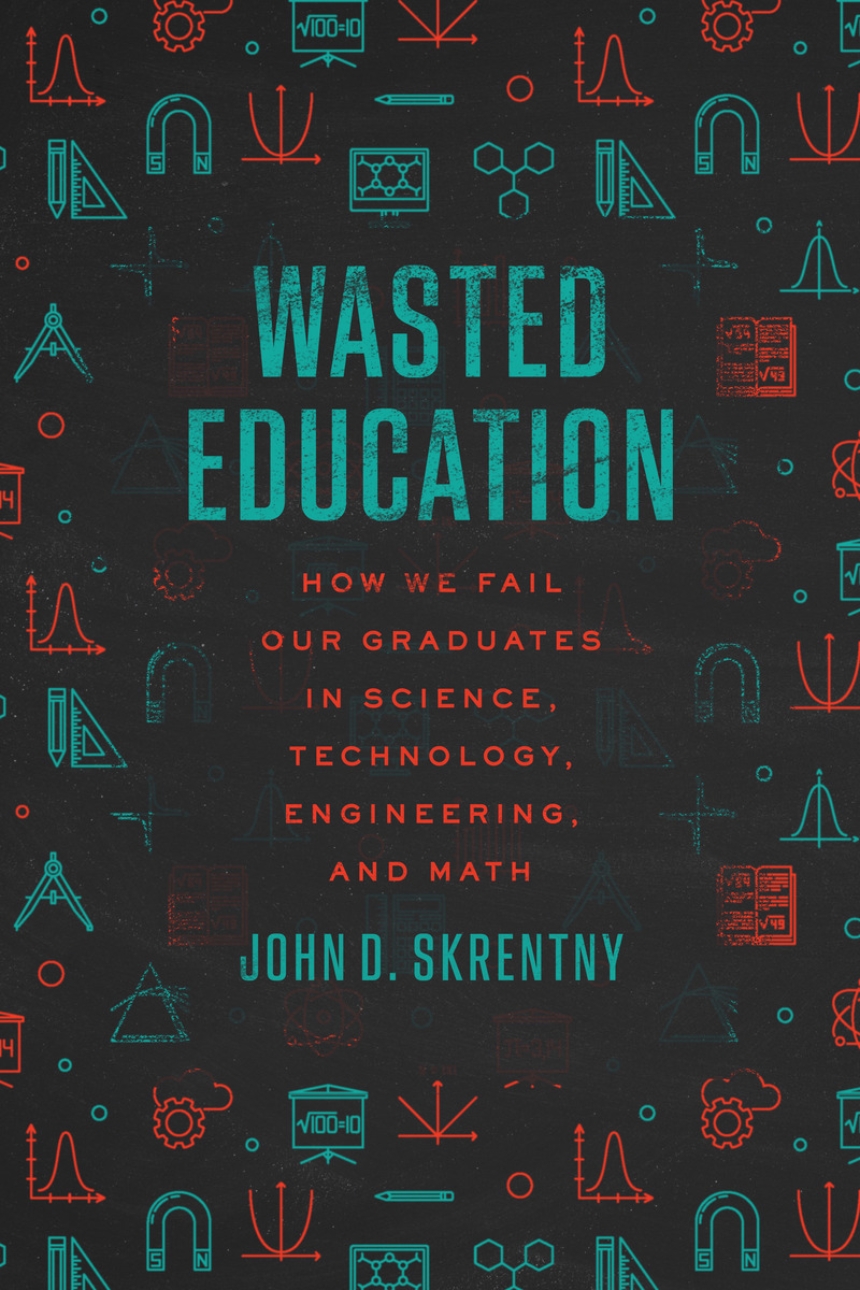Wasted Education
How We Fail Our Graduates in Science, Technology, Engineering, and Math
Wasted Education
How We Fail Our Graduates in Science, Technology, Engineering, and Math
An urgent reality check for America’s blinkered fixation on STEM education.
We live in an era of STEM obsession. Not only do tech companies dominate American enterprise and economic growth while complaining of STEM shortages, but we also need scientific solutions to impending crises. As a society, we have poured enormous resources—including billions of dollars—into cultivating young minds for well-paid STEM careers. Yet despite it all, we are facing a worker exodus, with as many as 70% of STEM graduates opting out of STEM work. Sociologist John D. Skrentny investigates why, and the answer, he shows, is simple: the failure of STEM jobs.
Wasted Education reveals how STEM work drives away bright graduates as a result of “burn and churn” management practices, lack of job security, constant training for a neverending stream of new—and often socially harmful—technologies, and the exclusion of women, people of color, and older workers. Wasted Education shows that if we have any hope of improving the return on our STEM education investments, we have to change the way we’re treating the workers on whom our future depends.
256 pages | 7 halftones | 6 x 9 | © 2023
Education: Higher Education
Sociology: Formal and Complex Organizations, Occupations, Professions, Work, Social Institutions
Reviews
Table of Contents
2 The Exodus from STEM Jobs
3 Burn and Churn: How Management Strategies Can Drive Away STEM Workers
4 The Precariousness of the STEM Job
5 Training and the STEM-Skills Treadmill
6 How STEM Employers Contribute to Their Own Diversity Problems
7 STEM Education for What? Investors, Employers, and the Purpose of STEM Work
Acknowledgments
Notes
Index
Excerpt
In an America riven by political conflict, there is at least one point of policy consensus: we highly value education in science, technology, engineering, and math (STEM). Both Democratic and Republican members of the US Congress support bills to boost STEM education, and recent presidents— Biden, Trump, and Obama— all have made funding of STEM education a priority. States as different as California and Mississippi have targeted public investments in STEM education, and cities have their own programs as well. Major philanthropies are investing in STEM education, and individual students and families are putting in their own dollars, time, energy, and effort. The number of STEM majors has surged.
While schools and universities have always taught math and science skills as part of a well- rounded education, and many advocates push STEM education especially in the kindergarten through high school phase for general mathematical and scientific literacy, there are several prominent rationales for massive investments in STEM education that extend to the college level and beyond. All share a goal of producing more workers for STEM occupations.
First, there is the shortage rationale. Employers and their advocates regularly complain, and have done so for decades, that American universities are not graduating enough STEM majors for them to hire. They say that their job openings for STEM positions remain open for months. Some throw up their hands and say they cannot wait any longer for universities to graduate more STEM majors, and they press for more STEM- educated foreign workers to be admitted to the US to meet their voracious demand. So urgent are their pleas that they may come with threats— that they will leave the US to set up operations in foreign countries because of the lack of STEM workers in the US.
Second is the competitiveness rationale. A favorite of policymakers as well as some employers, this line of reasoning emphasizes that STEM grads are crucial because STEM workers innovate, and innovation is the source of economic growth and strength as well as national security. The more we invest in STEM education, the more STEM workers we can have, and thus the more innovation we can have, and thus the more economic growth and strength we can have, allowing the US to compete better with other countries, and thus— at the end of this long chain, though this is rarely stated explicitly— the happier we all will be. The competitiveness rationale basically says that the more STEM workers we have, the better off we are.
The third rationale for investment in STEM education emphasizes diversity. A problem with STEM workers is that they are mostly male and mostly White and Asian. In the diversity rationale, the White or Asian maleness of STEM is a problem for two main reasons: (1) it is bad for the US because it means the US STEM workforce is missing out on talented women, African Americans, and Latinos; and (2) because STEM jobs are typically well paid, the underrepresentation of women, African Americans, and Latinos in STEM majors means they are missing out on middle- class, or even upper- class, lifestyles for which STEM jobs provide a gateway. Greater investment in STEM education, then, is an investment in American equality and a more fair and vibrant society.
A fourth rationale, which I confess is the basis for my own interest in STEM education but is not as prominent in public debates as the other three, relates to what STEM workers do with their skills. In a world facing calamitous climate change, experiencing global pandemics, and drowning in plastic pollution, we need more STEM workers because they are our best hope to develop new technologies for clean energy, lifesaving vaccines, and the maintenance of the biodiversity that our planet still enjoys.
Given these rationales, it is hardly surprising that there is a strong consensus on support for STEM education to create more STEM workers. But there is a problem with this enterprise. What if STEM graduates don’t become STEM workers?
